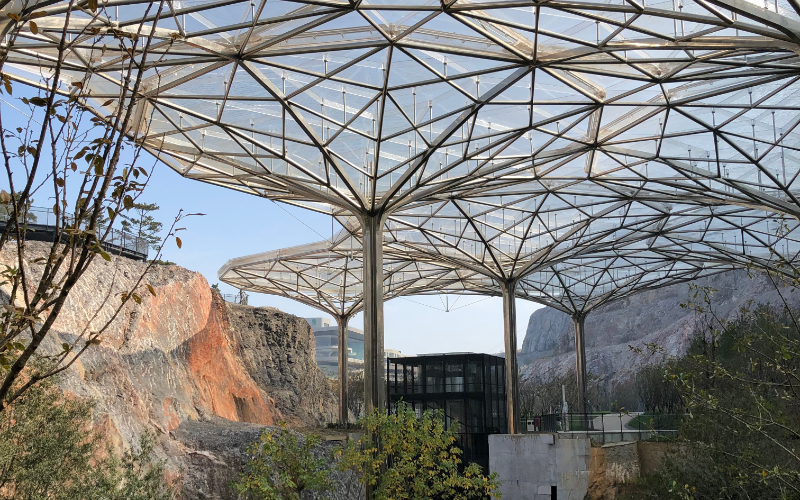Back | Blog posts overview
Gardens of stainless steel
10/11/2022
Located outside the Chinese city of Nanjing, the Jiangsu Garden Expo recreates famous classical gardens from across Jiangsu province. The 3.5 km2 park is an outstanding example of regenerating a degraded environment into a living museum furnished with hotels, restaurants, and entertainment. Stainless steel features prominently throughout the Expo.

© Fabio Ries
A hilly area in eastern Nanjing once hosted a cluster of stone and sand quarries and cement factories; they supplied building materials for a booming local construction industry that has since declined. The abandoned mines, equipment, and factory infrastructure left a legacy of severe environmental damage: kilometers of scarred mountain slopes, hills of debris, polluted water, and all but extinct plants and animals. A team of prominent personalities in urban planning, landscaping, and sustainable infrastructure headed by Chinese “starchitect”, Cui Kai, has now developed the damaged site into a tourist destination that celebrates the region’s rich history of garden design. Contrast and rebirth are key themes guiding the project. There are replicas of 13 existing classical gardens from across Jiangsu Province, including several UNESCO World Heritage sites, spanning over 1200 years of history.
Throughout the park, industrial remains are repurposed as massive planters for trees, living roofs, and other innovative green spaces. The timeless ancient gardens contrast with defunct factory equipment reclaimed by vegetation. These installations and others reflect the design team’s mission: to create a space embracing harmonious coexistence between humans and Planet Earth; appealing beauty coupled with efficient pragmatism and to make all this sustainable in the long term. Or, in Cui Kai’s own words, the Garden Expo “respects the environment, protects industrial heritage, and unearths the potential of space. (The Expo) juxtaposes old and new, heaviness and lightness, and with novel construction techniques, materials, and technologies, it creates a new space, a new landscape, a new experience”. Stainless steel plays an important role in the realization of this vision. Its varied surface finishes throughout the Expo help visually express both contrast and integration between humanity and nature. Thanks to its 2% molybdenum content, Type 316 stainless steel has improved corrosion resistance, contributing to sustainability and durability.
Discover more about the role molybdenum plays in the impressive Jiangsu Garden Expo.
Back | Blog posts overview

